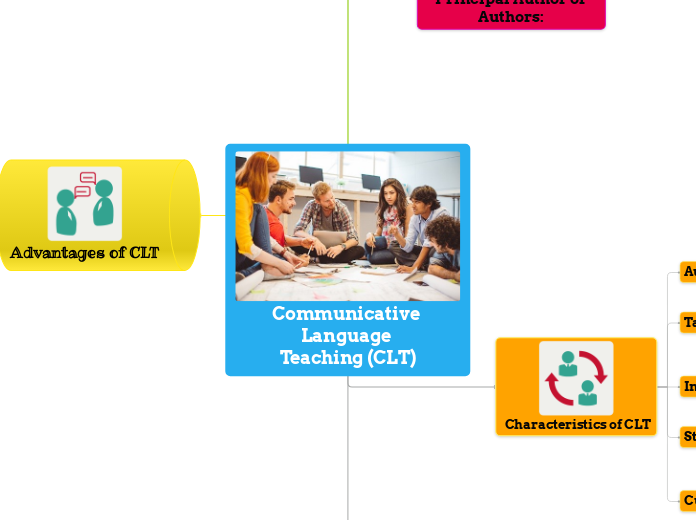
Communicative Language Teaching (CLT)

Principal Author or Authors:
While CLT doesn't have a single originator, its principles were influenced by linguists and educators such as:
Wilkins
David Wilkins contributed to the development of CLT by:
introducing the concept of "Notional Syllabuses," which focused on communicative functions and notions rather than just linguistic structures. This idea helped shape the communicative competence aspect of CLT.
Hymes
Dell Hymes introduced the notion of "communicative competence," emphasizing:
the importance of not only grammatical competence but also sociolinguistic and discourse competence. His work influenced the shift towards a more holistic approach to language teaching, aligning with the principles of CLT.
Canale and Swain
Michael Canale and Merrill Swain developed the concept of "communicative competence" further by breaking it down into three components:
grammatical competence, sociolinguistic competence, and strategic competence. Their work provided a theoretical framework for understanding the various aspects of language proficiency in a communicative context.

Characteristics of CLT
Authentic Communication
Emphasis on using the language for real communication purposes.
Task-based Learning
Activities are designed as tasks that mirror real-life language use.
Interaction
Learners actively engage with each other to practice and develop their language skills.
Student-Centered
Shifts focus from teacher-centered to student-centered learning.
Cultural Sensitivity
Incorporates cultural elements to enhance understanding and appreciation.

What is this ELT (English Language Teaching) method?
Communicative Language Teaching (CLT) is an approach
To language teaching that emphasizes communication as both the goal and the means of language learning.
It emerged in the 1970s
as a response to the perceived limitations of traditional grammar-translation and audio-lingual methods.
The primary focus is
on developing students' ability to use the target language in authentic communication situations.

Advantages of CLT
Real-life Language Use:
CLT encourages learners to use the language in realistic, everyday situations, promoting practical language skills.
Meaningful Interaction:
Learners engage in meaningful communication, fostering improved speaking and listening skills.
Contextual Learning
Language is taught in context, allowing learners to understand how language functions in various situations.
Motivation:
CLT often enhances learners' motivation by making language learning relevant and enjoyable.
Cultural Awareness:
CLT incorporates cultural aspects, helping learners understand the cultural nuances of the language they are learning.

Disadvantages of CLT
Grammar Neglect
Critics argue that CLT might sometimes neglect explicit grammar instruction, which can be a drawback for learners who benefit from structured rules.
Assessment Challenges
Assessing communicative competence can be challenging, and traditional testing methods may not fully capture learners' language proficiency.
Time-consuming
Implementing CLT activities can be time-consuming, making it difficult to cover certain language components in depth.
Teacher Training
Teachers may require specific training to effectively implement CLT, and not all educators may be prepared for this shift.
Varied Proficiency Levels
In mixed-ability classrooms, CLT may present challenges as learners with different proficiency levels interact.
